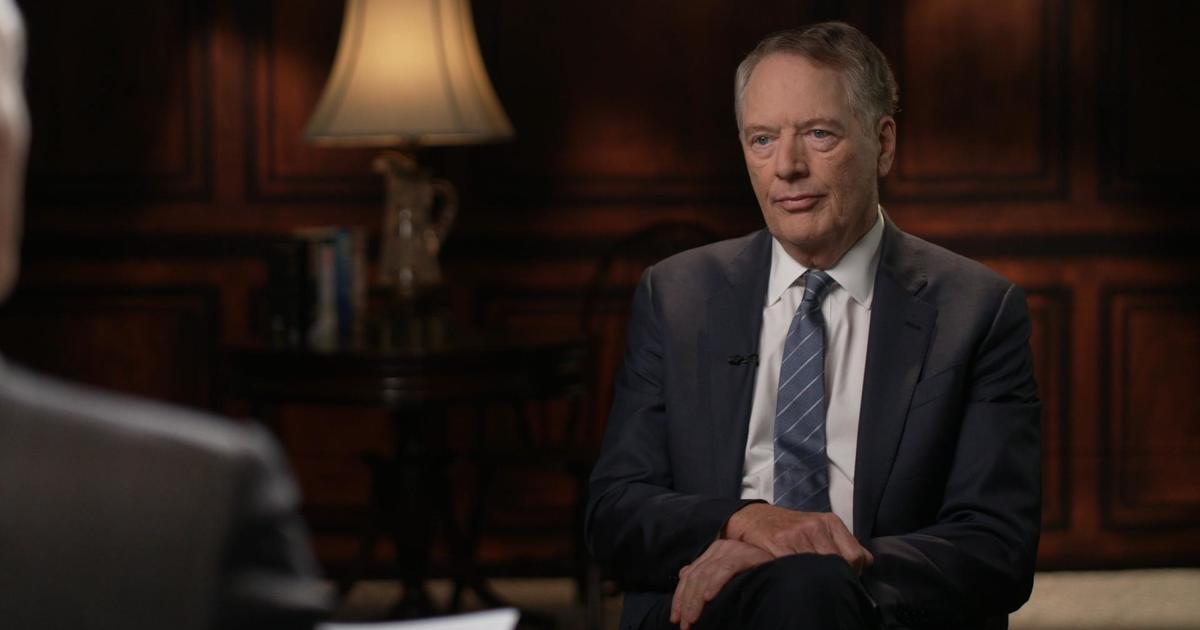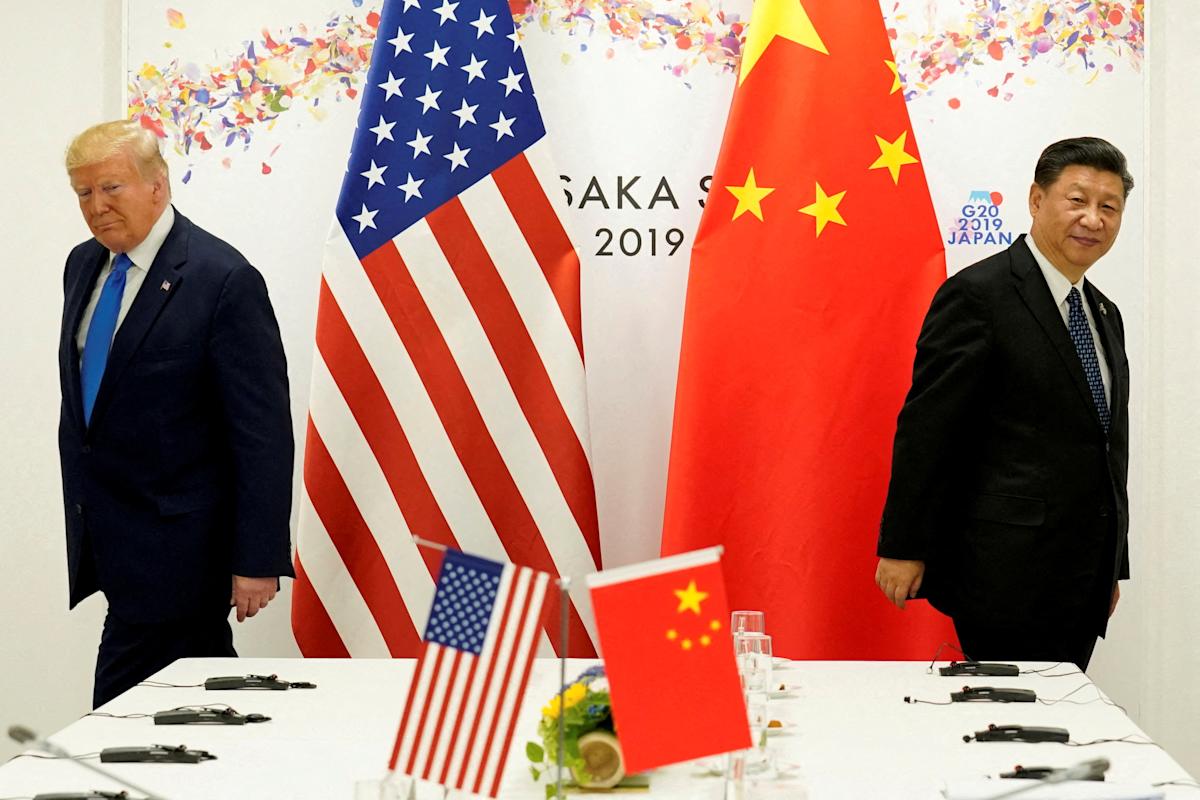Robert Lighthizer, who was the U.S. trade representative in President Trump’s first administration, says China poses an existential threat to the United States that must be urgently addressed by Washington. The threat is a result of years of unbalanced trade with China, Lighthizer says, and large, broad tariffs are needed to disentangle the two economies.
Lighthizer, who campaigned with President Trump, serves as an unofficial adviser. He was reportedly passed over for Treasury secretary, but he remains close to the president. Lighthizer says U.S. trade with China has largely benefited an adversary who has engaged in stealing trade secrets and other malicious actions.
“Around $1 trillion a year of wealth from the United States [is] being transferred to a geopolitical adversary. It’s insane. And it’s working,” Lighthizer said. “And then you ask yourself as a national security issue, how do you fight a war if, God help us, if we ever have a war with China when they’re now four times more likely to be able to produce what is needed in a war?”
China tariffs
Although Mexico and Canada are among America’s largest trading partners, Lighthizer says trade with China poses the most serious danger.
“China to me is an existential threat to the United States,” he said. “It is a very, very competent adversary. China views itself as number one in the world and wants to be that way. They view us as in the way.”
Pool / Getty Images
Balancing trade between the U.S. and China rather than severing it is a critical first step in resetting trade relations, according to Lighthizer.
“We sell you $150 billion. We buy $150 billion from you. No more,” Lighthizer said.
Tariffs will also play a role in limiting the amount of Chinese goods imported into the United States.
Before taking office, Mr. Trump threatened to impose tariffs of up to 60% on all Chinese imports, which Lighthizer said would be a start. Mr. Trump on Saturday signed an executive order imposing 25% tariffs on imports from Canada and Mexico, while adding an additional 10% levy on goods from China. Mr. Trump said he was enacting tariffs, in part, to halt the flow of illicit drugs into the U.S.
“Fentanyl is a national crisis, and any steps the president takes to address the problem I applaud,” Lighthizer said.
Trump’s universal tariffs
Tariffs have been debated for centuries and every U.S. president has used them. But in the 1930s, tariffs deepened the Great Depression, and after World War II, the world moved towards free trade. U.S. manufacturing jobs remained stable as the world’s economies became more intertwined. But around 2000, U.S. manufacturing began to decline hitting a low in 2010 in the wake of the Great Recession. Over those 10 years, a third of U.S. manufacturing jobs — roughly six million — disappeared. There was a modest rebound under Presidents Obama, Trump, and Biden.
On the campaign trail and in the White House, Trump said America would grow wealthy by collecting taxes from overseas.
“A tariff is a tax on a foreign country. That’s the way it is, whether you like it or not. A lot of people like to say, ‘Oh, it’s a tax on us.” No, no, no. It’s a tax on a foreign country. It’s a tax on a country that’s ripping us off and stealing our jobs,” Trump said in Wilkes-Barre, Pennsylvania, in August.
Most importers and economists will say the president is mistaken. Tariffs are not a tax on a foreign country. The tax is paid by the importer in the U.S. So if Walmart, for example, imports goods from China, Walmart pays the tariff when the goods cross into the U.S. And if Walmart decides to pass the cost down to consumers by raising prices in stores, it’s the American people paying the tariff, not China.
60 Minutes
Economist Mary Lovely, who studied Trump’s proposals for the Peterson Institute for International Economics, a leader in nonpartisan research, has estimated that the tariffs Trump proposed on the campaign trail, which differ from the ones he enacted on Saturday, would cost an average American household around $200 a month. Prices for goods like footwear, toys, home goods, machinery, active ingredients in pharmaceuticals and some chemicals would be among those to spike, according to Lovely.
Economists also fear Trump’s tariff proposals will destroy jobs. Lovely and others point to Trump’s first-term tariffs on imported steel. As intended, steel prices rose and U.S. mills were protected. But, the higher prices hurt steel buyers, like car makers. Economists estimate that the tariffs created 1,000 jobs in steel, but cost 75,000 jobs among U.S. companies overall.
“This idea that it creates jobs, yes, in a few places for a few people. But for the majority of us, it’s more pressure on employers,” Lovely said. “It’s more pressure on our wages. It’s more pressure on our jobs. And, obviously, more pressure on our wallets when we go to the cash register.”
Lighthizer disagrees
Lighthizer says economists are mistaken. Not only does he disagree that tariffs will be inflationary, Lighthizer argues companies will adjust to the higher tariffs costs and find new ways to be profitable.
“Of course they’ll figure it out,” Lighthizer said. “They’re gonna learn how to make money.”
Companies will make profits under a new tariff regime, and they will boost manufacturing, according to Lighthizer.
“You will see more production in the United States. You will see more jobs, better jobs, more pressure, upward pressure on wages, which is my objective,” he said.
Not just tariffs
Lighthizer hopes for a manufacturing renaissance in the United States that will be ushered in by tariffs and a new economic policy. Tax and spending cuts, more energy production and regulatory reduction would be part of it. If manufacturing jobs are ever to come back, Lighthizer says, bold policy like the one he proposes is necessary.
“If we do this [and] in 10 years it doesn’t work, we can go back and always fail again the way we have in the past,” he said.
Economists remain skeptical.
“I’m afraid that tariffs, time and time again, have proven to not deliver. So in the long run, I’m afraid it will just increase cynicism among the American public about whether the government is able to deliver and make their lives better,” economist Mary Lovely said.





